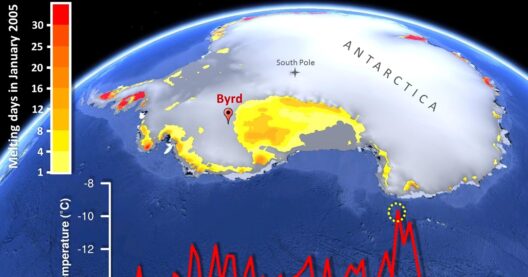Global warming poses an imminent threat to our planet, characterized by a gradual elevation in mean temperatures, erratic weather patterns, and an increase in extreme climatic events. The climate crisis calls not only for robust policy changes but also for a thorough exploration of technological innovations. This discourse probes the question: are there any proven technological fixes for global warming, and how might these solutions transform our environment and society?
First and foremost, it is imperative to delineate the myriad ways in which technology can potentially mitigate the effects of climate change. While the focus often rests on renewable energy sources such as solar, wind, and hydroelectric power, a plethora of other technologies warrant attention. These innovations range from carbon capture and storage (CCS) to innovative agricultural techniques, each promising the potential to diminish carbon emissions and enhance sustainability.
Renewable Energy Technologies
At the forefront of the climate battle are renewable energy technologies. The transition from fossil fuels to renewable energy sources is crucial for reducing greenhouse gas emissions. Solar energy, harnessed through photovoltaic panels, converts sunlight into electricity with remarkable efficiency. Wind energy, generated using turbines, is another avenue that has experienced exponential growth. These technologies not only promise to decarbonize electricity production but also facilitate energy independence and security.
However, the promise of renewable energy does not solely reside in its deployment; it also lies in energy storage innovations. The effective storage of energy is pivotal in addressing the intermittent nature of renewable resources. Advancements in battery technology, particularly lithium-ion and emerging solid-state batteries, enhance the capacity to store energy for use during peak demand periods. The integration of extensive energy storage systems will undoubtedly underpin a resilient and sustainable energy grid.
Carbon Capture and Storage
One of the most discussed technological fixes for global warming is carbon capture and storage (CCS). This technology captures carbon dioxide emissions produced from industrial sources, preventing them from entering the atmosphere. Once captured, the CO2 is transported and sequestered underground in geological formations. CCS presents a dual opportunity: it can significantly reduce emissions while facilitating the continued use of fossil fuels during the transition to cleaner energy sources.
However, CCS is not without its critics. The technology requires massive investments and extensive infrastructure development. Furthermore, concerns linger regarding the long-term efficacy of underground storage and potential leakage. Despite these challenges, various pilot projects across the globe have demonstrated CCS’s potential to be a viable solution in the fight against climate change.
Innovative Agricultural Technologies
A less conventional yet equally critical arena lies in innovative agricultural technologies. Agriculture is not only a victim of climate change but also a significant contributor to greenhouse gas emissions. The adoption of precision farming techniques, which utilize data analytics and technology to optimize crop yields while minimizing waste, holds remarkable promise. This convergence of agriculture and technology can substantially reduce emissions associated with fertilizers and land use.
Moreover, regenerative agriculture practices offer a restorative approach to farming. By enhancing soil health, increasing biodiversity, and optimizing land use, this technique sequesters carbon in the soil and potentially reverses environmental degradation. Farmers adopting these practices can contribute to reducing atmospheric CO2 levels, thereby addressing the very core of the global warming crisis.
Geoengineering: A Controversial Frontier
As we venture deeper into the realm of technological solutions, geoengineering emerges as a controversial yet captivating field. This encompasses a range of approaches designed to deliberately manipulate the Earth’s climate system to counteract the effects of global warming. Techniques such as solar radiation management (SRM) and ocean fertilization aim to reflect sunlight away from the Earth or enhance carbon uptake in oceans.
While geoengineering may offer compelling theoretical solutions, ethical concerns abound. The unintended consequences of large-scale interventions into complex climate systems could exacerbate environmental inequities or precipitate catastrophic climate anomalies. Thus, while exploring geoengineering, careful consideration of ecological ramifications and governance frameworks is paramount.
Decentralized Energy Solutions
In addition to large-scale technologies, decentralized energy solutions augur significant promise for global warming mitigation. Microgrids and community-based renewable energy systems enable localized energy production and consumption, thereby reducing reliance on fossil fuel-powered grids. This paradigm shift not only engenders greater energy resilience but also democratizes energy access, empowering communities to take charge of their sustainability journeys.
The promise of technological fixes extends beyond mere emission reductions. Innovations have the potential to catalyze economic growth, foster job creation, and enhance societal resilience in the face of climate challenges. Each innovation serves as both a tool and a catalyst, transforming the narrative surrounding climate action from one of despair to one imbued with hope and opportunity.
Conclusion
The question of whether there are proven technological fixes for global warming invites a complex dialogue. While several promising technologies exist, we must approach their implementation with vigilant consideration of ethical, social, and environmental implications. The convergence of innovation, policy, and societal engagement is the cornerstone of an effective response to climate change. As we stand at this juncture, it is imperative to consider not only the promises of these technologies but also the collective will to embrace transformative solutions. Thus, by strategically deploying proven innovations, we hold the potential to halt and ultimately reverse the damaging trajectory of global warming.








